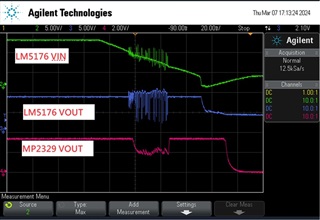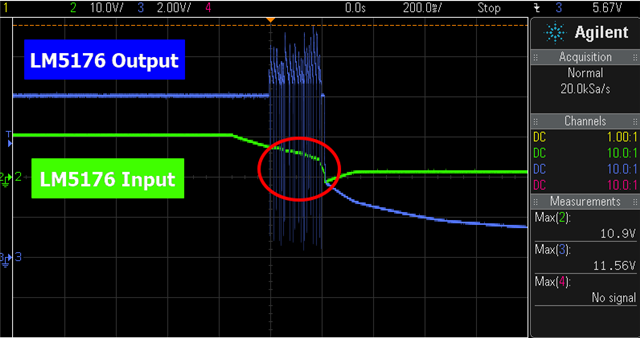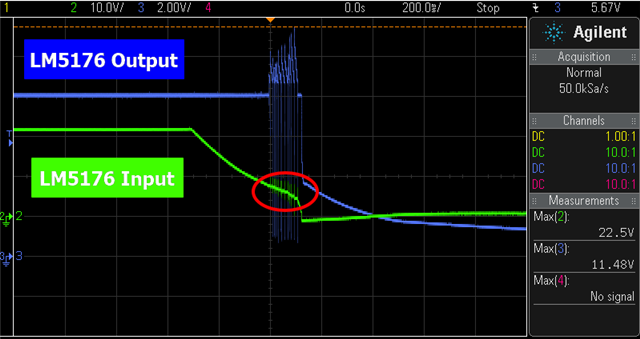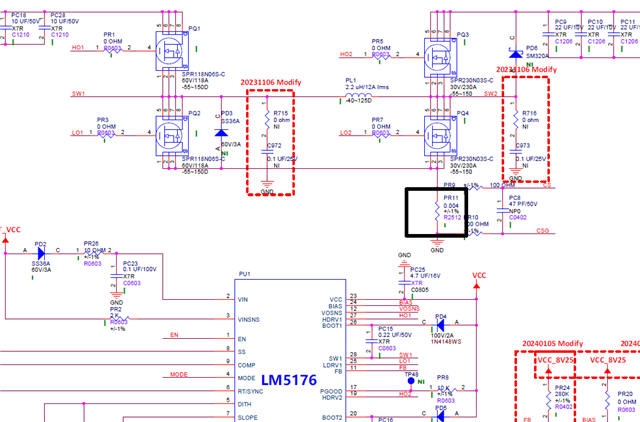Hi Sir,
LM5176 Vout will have abnormal problem in low temperature ambient( -35 deg.).
all around component are between -55~150 deg.
currently, the customer design LM5176 is DCIN 12V or 24V ==> LM5176(8.25V) ==> MP2329(3.3V).
may we know that LM5176 can work at TA=-35 deg.?
any idea or suggestion for us? thnaks for you help and learn from you.






